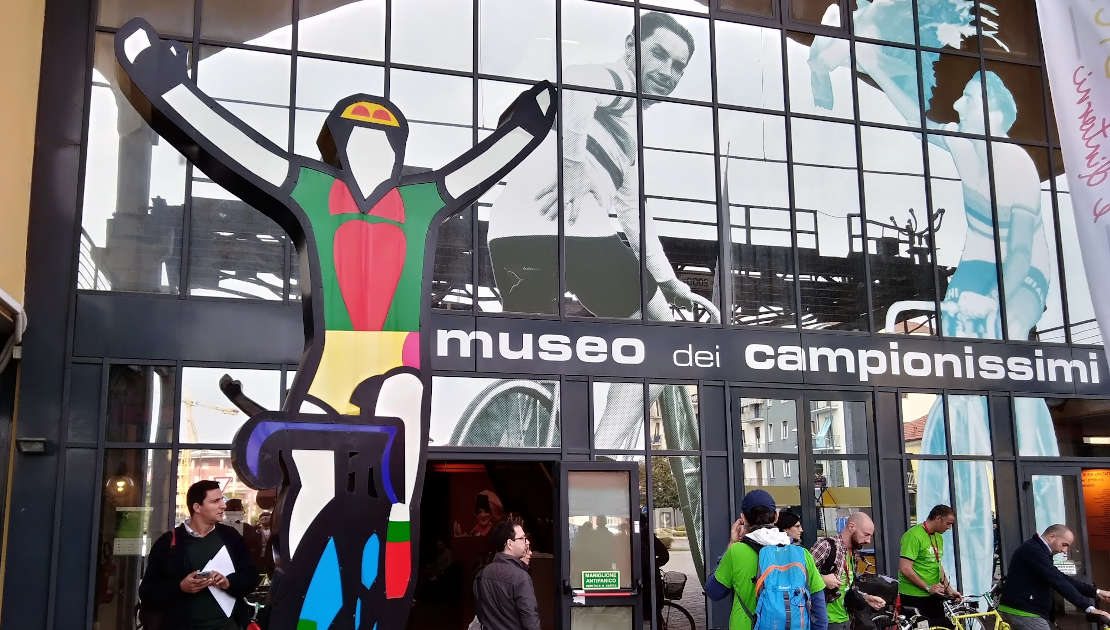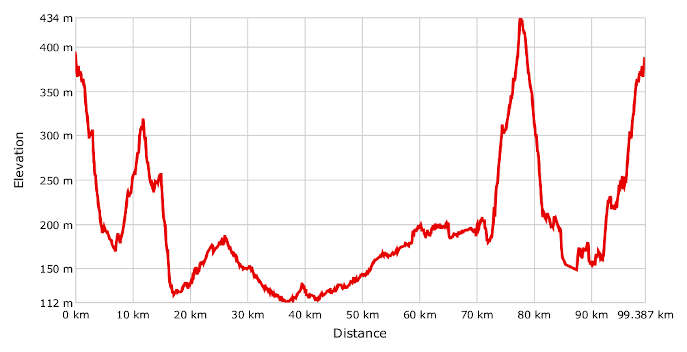
- Bike: strada/trekking
- Difficulty: **
- Distance: 99 km
- Altitude difference: 322 m
- Total ascent: 1130 m
- Total descent: 1144 m

The ASD I Colli di Coppi is a team whose main aim is to raise awareness of the area and promote the cycling tourism routes winding through the parts where Serse and Fausto Coppi were born and grew up.
Since 2011, the ASD I Colli di Coppi has organised a classic Ciclostorica (vintage cycling event) entitled La Mitica (the mythical) for the start of the summer. It’s a major stage of the Giro d’Italia d’Epoca - GIDE (Vintage Giro d’Italia) as well as an event that’s valid for obtaining the Brevetto dei Campionissimo - Ciclostoriche del Nord Ovest (Campionissimo certificate - north-west vintage cycling events).
Ciclostorica events promote ‘slow’, non-competitive cycling tourism, managing to both showcase the area and preserve its countryside superbly, raising awareness and appreciation of the beauty of these locations – from the hills of Tortona to Monferrato – and the quality of the food and wine they produce.
It takes place on the last Sunday of June every year, starting from and ending at Castellania. The legend of Fausto Coppi represents a powerful draw, and many cyclists are excited about and come to these vintage cycling meets. They arrive from all over Italy and other countries, like the UK, Germany, France, Switzerland, the USA and Brazil.
For the 100th anniversary of Fausto Coppi’s birth (Castellania, 15/9/1919 – Tortona, 2/1/1960), La Mitica features three different routes: one short, one medium and one long, 53 km, 70 km and 88 km respectively.
This guide will contain the medium and long routes. The latter, with the addition of the HC (Hors Catégorie) variant, extends to a total of nearly 99 km, with a total of 11 km on track and divided into four distinct sections.
Start from Castellania Coppi, at the Coppi Mausoleum in Piazza Candido Cannavò (named after a long-standing journalist and editor of La Gazzetta dello Sport, a great fan of Fausto Coppi). The first stretch is downhill towards Costa Vescovado. The route goes over the roads of the Percorso Attrezzato di Fausto, about 20 km. Pass through Cerreto Grue, climbing slightly up to Sarezzano then coming down to Viguzzolo. After 5 km, you come to Volpedo. This village is famous for Giuseppe Pellizza (Volpedo 28/7/1868 – Volpedo 14/6/1907), the great divisionist painter and painter of the famous work The Fourth Estate, which came to symbolise the world of labour and political, social and workers’ struggles.
For the 100th-anniversary Mitica, the first stop for refreshment is in the village of the renowned painter. For those who are doing the Ciclostorica route as tourists, on the other hand, it’s an opportunity to stop and visit the Pellizza da Volpedo museums (Painter’s Studio - Via Rosario 1/a, Multimedia Educational Museum, Piazza Quarto Stato) and the Romanesque church of San Pietro.
The route continues over a long level stretch punctuated by brief climbs. Pass through Castellar Guidobono and enter Tortona (the fourth biggest town in the province of Alessandria, after the eponymous city, Casale Monferrato and Novi Ligure).
Tortona, known as Dertona in ancient times, was a major centre in ancient Roman times. It was of strategic importance in military terms, for region IX under Augustus in particular. We do not know when the town was founded, but it was probably some time between AD 123 and 109, following the construction of Via Postumia (the most important road in northern Italy).
The second refreshment stop on the Ciclostorica is here, but tourists can take the opportunity to taste the local baci di dama biscuits together with the great wines of the Tortona hills.
When you set off again, cross the river Scrivia towards Bettole then head into Novi Ligure, home to the Museo dei Campionissimi museum dedicated to the great cyclists Fausto Coppi and Costante Girardengo. The latter was a cyclist in the ‘heroic’ period in Novi Ligure (Novi Ligure, 18/3/1893 – Cassano Spinola, 9/2/1978). In honour of Girardengo now, pass the river Scrivia to go through Cassano Spinola, where Costante is buried. There’s the air of a great climb in the distance, of 5 long kilometres that take you first to Gavazzana then to the KoM point in Sant’Agata Fossili, 430 m above sea level.
Take the long way down to Villaverna then continue to Carbonara Scrivia, with its Donjon (tower castle) standing out. After the village of Villaromagnano is the hamlet of Rampina, whose name means 'little ramp'. As it happens, there is a ramp of sorts here leading up to Costa Vescovado! The last climb from here leads to the end of the race, in Castellania, arriving in front of the house where Fausto and Serse Coppi were born. Today it’s a house and museum, and a visit is recommended.
